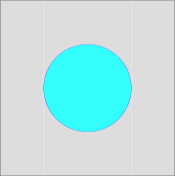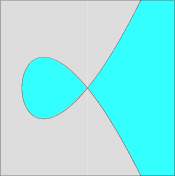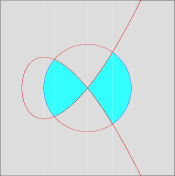

- General Information
- Home
- Important Dates
- Conference Poster
- Organizing Committee
- Sponsors
- Registration
- Information
- Registered Participants
- Local Information
- Conference Location
- Speakers' Information
- Lodging
- Traveling
- Gastronomic Guide
- Additional Information
- Miscellaneous
- Social Events
- Previous ISSACs
- Other Events
TutorialsThe following tutorials are offered on ISSAC 2004
The tutorials will take place on
Sunday July 4, 2004.
Tutorial 1
Cylindrical Algebraic Decomposition
|
 |
 |
 |
| x2 + y2 ≤ 1 | 2 y2 < x2 (2 x + 3) | x2 + y2 ≤ 1 ∧ 2 y2 < x2 (2 x + 3) |
2. Some quantified formulas and quantifier-free equivalents.
- ∃ x [a ≠ 0 ∧ a x2 + b x + c = 0] ⇔ b2 - 4 a c ≥ 0
- ∃ x,y [ y = m x + k ∧ x2 + y2 = 1 ] ⇔ k2 - m2 - 1 ≤ 0
Tutorial 2
Power Series and Summation
Wolfram
Koepf
University of Kassel, Germany
15 years ago Doron Zeilberger's seminal work revolutionized algorithmic summation ([4], [6]). Briefly afterwards an algorithm for the computation of infinite series of hypergeometric functions was published [3]. The algorithms under consideration are too complicated for hand computations and therefore require implementations. Several implementations of the basic algorithms of Gosper [1], Zeilberger [7], Petkovsek [5] and Koepf [2], [3] were developed. This software development is still ongoing, and not all questions of efficiency are completely resolved.
The above algorithms have many applications in combinatorics since most combinatorial quantities have representations as sums. If such a sum is hypergeometric, Zeilberger's algorithm either finds a "closed form" or detects a holonomic recurrence equation for it. A homogeneous linear recurrence equation with polynomial coefficients is called holonomic.
Other combinatorial problems are solved with the use of generating functions. Mostly one is interested in a "closed form" representation of the coefficients, or one would like to compute the coefficients efficiently. This can be handled by Koepf's algorithm, again by computing a holonomic recurrence equation. Where required, both in Zeilberger's as well as in Koepf's case Petkovsek's algorithm decides whether such a term can be represented in "closed form", namely as hypergeometric term. There are generalizations of the algorithms for basic hypergeometric series, for multiple sums, for integrals instead of sums, and one can compute holonomic differential equations [4].
The following algorithms are covered in the tutorial:
- the computation of power series representations of hypergeometric type functions, given by "expressions" (like arcsin(x)/x)
- the computation of holonomic differential equations for functions, given by expressions
- the computation of holonomic recurrence equations for sequences, given by expressions (like binomial(n,k)*x^k/k!)
- the computation of generating functions
- the computation of antidifferences of hypergeometric terms (Gosper's algorithm)
- the computation of holonomic differential and recurrence equations for hypergeometric series, given the series summand (like P(n,x)=sum(binomial(n,k)*binomial(-n-1,k)*((1-x)/2)^k,k=0..n)) (Zeilberger's algorithm)
- the computation of hypergeometric term representations of series (Zeilberger's and Petkovsek's algorithm)
- the verification of identities for (holonomic) special functions.
All algorithms are presented by Maple implementations.
References
- Gosper Jr., R. W.: Decision procedure for indefinite hypergeometric summation. Proc. Natl. Acad. Sci. USA 75, 1978, 40-42.
- Gruntz, D., Koepf, W.: Maple package on formal power series. Maple Technical Newsletter 2 (2), 1995, 22-28.
- Koepf, W.: Power series in computer algebra. J. Symbolic Computation 13, 1992, 581-603.
- Koepf, W.: Hypergeometric summation. Vieweg, Braunschweig-Wiesbaden, 1998.
- Petkovsek, M.: Hypergeometric solutions of linear recurrences with polynomial coefficients. J. Symbolic Computation 14, 1992, 243-264.
- Petkovsek, M., Wilf, H. and Zeilberger, D.: A=B. AK Peters, Wellesley, 1996.
- Zeilberger, D.: A fast algorithm for proving terminating hypergeometric identities. Discrete Math. 80, 1990, 207-211.
Tutorials Chair
-
Thomas Sturm (University of Passau, Germany)